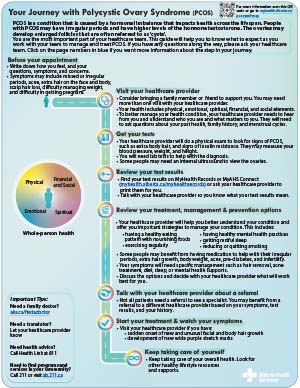Before your appointment
To get ready for your appointment with your healthcare provider:
- Write down how you feel, your symptoms, when symptoms start, what makes your symptoms better or worse, and any concerns you have. Use a
symptom tracker (PDF) to help you remember information about your symptoms.
- Make a list of your questions and concerns. When you’re done, mark the things that are most important to you.
- Make a list of the prescription and non-prescription (over-the-counter) medicines you use, including any vitamins, herbs, and supplements.
- Ask someone you trust to go with you to your appointment. They can help you ask questions, write down instructions, and remember explanations.
- Bring a pen and paper and plan to write notes during the visit. Or you can record the conversation using your phone or an app like the Alberta Health Services
My Care Conversations app.
During your appointment
Your healthcare provider may ask you several questions about your health history and your family’s health history. They may ask about your:
- menstrual cycle
- past pregnancies or attempts to get pregnant
- unwanted hair growth
- symptoms
- weight management
- medicines and supplements
- ethnicity
These questions help your healthcare provider diagnose PCOS and know how to best support you and your overall health.
Your healthcare provider will also check your height, weight, and blood pressure. Because PCOS can increase your risk of diabetes and heart disease, knowing your current height, weight, and blood pressure will help your healthcare team manage these risk factors and also manage your PCOS symptoms.
Your healthcare provider may also do an exam to check for signs of high testosterone levels, insulin resistance, and other conditions. This exam includes:
- Looking for skin tags and dark, thick, velvety skin in your body folds and creases.
- Looking for extra hair in different parts of your body, especially on your face and chin. You may want to delay shaving, plucking, or doing any hair removal before your appointment.
- Looking for wide purple stretch marks in your belly area and other parts of your body.

Polycystic Ovary Syndrome (PCOS) Pathway
Download or print the
full patient pathway (PDF) and
summary (one-page PDF) to learn more about how to manage and treat PCOS.
Patient Pathway  Summary
Summary 
